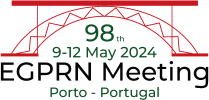A key informant survey on factors influencing low prescribing of new antidiabetic drugs in Croatia
Tomislav Kurevija, Dunja Šojat, Zvonimir Bosnić, Marion Tomičić, Silvija Canecki-Varžić, Ines Bilić-Ćurčić, Ljiljana Trtica-Majnarić
Keywords: type 2 diabetes, GLP-1ra, SGLT2-i, family medicine, low prescribing, clinical guidelines
Background:
Patients with type 2 diabetes (T2D) are usually insufficiently controlled. The identified causal factors refer to the doctors, the patients, and the healthcare system. Recently, with the appearance of new antidiabetic drugs with proven cardiovascular benefits, GLP-1ra and SGLT2-i, one more problem has been revealed – an inability of clinical guidelines to deal with complex patients from the real world.
Research questions:
What are prescription rates of new antidiabetic drugs in Croatia and the key factors influencing their low prescribing?
Method:
A qualitative study - work in progress. Two self-developed and thematically related questionnaires were sent to GPs across Croatia by email to gain data on the prescription rates of new antidiabetic drugs and the main areas of barriers for their effective prescribing, including: GPs` knowledge on the guidelines, decision-making in specific clinical situations based on recommendations from the guidelines, healthcare system organization, prescribing practice of antidiabetic drugs, and communication with patients. Standard statistical methods and regression models will be used to analyze the data.
Results:
The preliminary results of 86 assessed GPs (F 67.4%), 38.4% from rural areas, are represented, covering a total of 12023 patients with T2D. A tendency is visible to reduce the share of prescription of the old-fashioned sulfonylurea class of drugs, so that 81.4% of GPs answered that a minor part or less than a quarter of their patients were prescribed these drugs. The percentages of patients who were prescribed GLP-1ra, SGLT-2i or their combination were 13.1%, 16.7% and 6.1%, respectively.
Conclusions:
Prescription rates of new antidiabetic drugs in Croatia are generally low but comparable with other EU countries. Results of this survey will provide essential understanding of the reasons of low prescribing of new antidiabetic drugs in Croatia and help organize the survey across Europe aimed at finding the effective solutions.
Points for discussion:
#22

